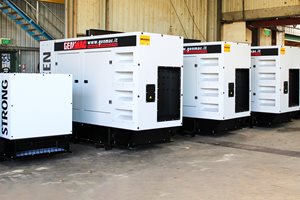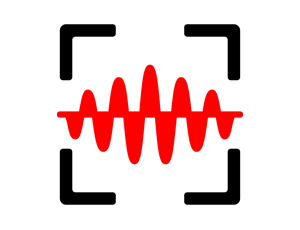How to choose a home stand-by generator
Whether you're using a generator as your primary source of power, or as back up in case of an emergency, Brooks Equipment supply a wide range of generators for sale, keeping your site up and running. Carrying the range of Genmac generators, from the 5kVA Genmac Combiplus, through to the 1700kVA Genmac Extreme, read below for your guide to choosing a home stand-by generator, shared by the Genmac team.

If you intend to buy a generator set for your home, remember that
the equation 3kW mains power = 3kW generator is wrong, in fact the power you need is certainly higher.
Equipment such as air conditioners, electric gates and doors, refrigerators, dishwashers, electric pumps, electric motors in general, halogen or neon lamps, have starting peak powers ranging from x1.5 to x2.7 times the rated power of the equipment.
We will dedicate a newsletter in the Technical Info section to this topic in order to provide more details.
Due to this false myth, very often we receive requests to offer a "Home stand-by generator" without even specifying the power.
The best advice we can give you, if you are not able to list precisely the electrical equipment that you will need to power,
ask your trusted electrician to do the count.
If use the generator set as
pure emergency back-up power, for a limited period of time,
you can exclude some equipment during the emergency period so that you can manage it with a smaller generator. But given the investment you are going to make, and considering that our homes have become, and will become, more and more energy-intensive over the years (and we are less and less willing to live without all our comforts...),
it would be good not to skimp on kW because you risk regretting this choice.
The generator is the most reliable and efficient way to produce electricity, and with actual energy costs it is also becoming an economical way to produce it. Like any other machine,
it needs care and precautions to keep it in good condition and if you follow the maintenance procedures
it can really last you a lifetime.
Since it is an investment with a certain cost,
you need to choose the right generator.
Identifying the generator model that best suits your needs and your home is not just a matter of power selection, but there are other parameters that influence this decision and here's what you should know to make the right choice.
Fuel Type

Home stand-by generators models are available in
petrol, diesel, natural gas, LPG.
The choice of the type of fuel may depend on practical factors, such as the presence of other machines with diesel rather than petrol engines, the presence or absence of dedicated gas connections, for economic, ecological reasons, availability and price of the type of fuel in the local market, etc.
Nowadays there are generators that mount engines, both diesel and petrol, with
very low exhaust gas emissions, now comparable to gas-powered machines.
Those who buy a petrol generator have lower initial investment and maintenance costs, it is excellent for managing emergency situations for limited periods. The limit is that gasoline engine range is available only at 3000/3600 rpm not available for power over 15kVA and not able to sustain long days of continuous work. Be sure the gasoline engine mounted on your generator is specifically setup for Autostart like on Genmac models equipped with ATS presetting.
Gas Generator, requires a higher initial investment but it is an
ecological choice which involves as
well fuel savings. Not requiring a storage tank (as they are powered by the gas network), there is the advantage that there is no fuel deterioration and in the most extreme emergency situations, in which it could be difficult to go and buy fuel, it is ready and available.
Diesel is a classic, it is also available at
1500/1800 rpm so great for
uninterrupted work even 24h/7, as well for electricity production etc... Diesel engines need help when starting at low temperatures, so if you expect the generator to be in an environment of 0°C or less, preheating systems must be included.
Sound Level

Like any motorized machinery, the generator set makes noise.
The noise level of the generator is normally expressed in dBA measured at a distance of 7 metres. If you intend to install the generator in a built-up area, outdoors, to keep the neighborhood friendly,
the sound level should not exceed 68dBA.
Never purchase an open (not silent, without canopy) generator for a residential installation in a built-up area unless you have a room or container in which to place it, with proper exhaust fumes and ventilation arrangements to cushion the sound emissions.
Installation site
 What kind of space do you have for your generating set?
What kind of space do you have for your generating set?
Outdoors, under a roof, inside a shelter or in a room?
If the installation is outdoors, make sure that the canopy of your generator is suitable for outdoor use.
It is absolutely forbidden to place outdoors Open type generators, which must be protected from atmospheric agents and installed in a closed environment.
Small generators on the market tend to have a lighter structure and it is always preferable to place them at least under a roof; let's not forget that electricity and water don't get along very well and that additional protection is never too much, a lot of snow could cover the generator, etc.
In general, just like with your car, it's okay to park it outside, but if it's possible to park it inside a garage or under a shed, it's better, both in summer and in winter.
Make sure unauthorized personnel do not have access to your generator, great attention must be paid to these aspects.
Therefore,
a lockable fence, away from fuel depots, flammable materials and chemicals, with a protective roof,
is always the best choice.
Even in outdoor installations, must be sure exhaust smoke do not directly reach people or buildings.
In case of installation
indoors the dimensions of the room are fundamental.
Check the following conditions carefully:
- The room is suitably sized to allow access to the engine and generator for ordinary maintenance and any repairs (on at least 3 sides).
- The openings in the room allow sufficient fresh air flow for combustion and for cooling your generator.
- A suitable engine exhaust gas extraction line has been designed.
- Remember your generator must be transported inside the installation site. It seems a silly consideration but it is often forgotten that it is necessary to reach a basement or a raised floor where and there are not adequate accesses or the entrance door is not wide enough, and then you have to break walls, hire cranes, etc.
- Do not channel air outlet into closed rooms, garages, other people's private property, towards flammable materials or people, etc.
Another aspect often overlooked is that the place where the generator will be installed should be flood-proof.
The Automatic Switchgear (ATS)

Home Stand-by generator becomes part of a system that intervenes in emergency situations when the current supplied by the electricity grid fails. This also includes an Automatic Transfer Switch (ATS), which automatically switches on the generator in the event of a power failure and transfers the house utilities to be supplied with electricity in about 30 seconds. The ATS is metal or plastic box that contain contactors, to be fixed to the wall.
As for generators, there are ATS suitable for outdoor installation (for example our ATS-L4520 / ATS-C / ATS-M models) and others for indoor use only (ATS-L6).
And After?

If you take care of your generator it really can last you a
lifetime. Timely routine maintenance makes the difference.
Ask your dealer for
annual maintenance package at the time of purchase, so that you can get the
most advantageous price and have peace of mind.
For further information or to purchase one of our generators, speak to the friendly Equipment team on 1300 276 657 or get an easy online quote at www.brooksequipment.com.au.